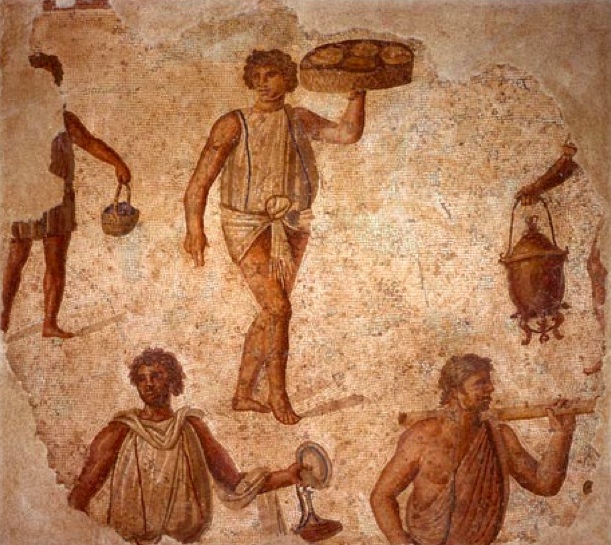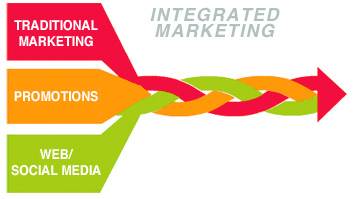Marketing

The term advertising can be defined as “communication of a message to the public, that message being designed to achieve an objective; the objective will vary, depending on whether the advertisement serves a business or a public purpose” (Firestone, 1968, p.1). References Firestone, O.J. (1968) “The Economic Implications of Advertising” Institute of Canadian Advertising

The evolution of selling had several distinct phases of development during the course of late 19th and 20th centuries. Industrial revolution of late 19th century caused a tremendous amount of exchange of goods between people and nations all over the world. Strategic resources at this time were capital and resources companies controlled. Therefore sales success was defined by meeting sales quotas. This period can be roughly defined from 1860s – 1960s. However from 1960s a new age in the area of selling has started. It was an Information Age. From 1960s till now information has radically changed how selling is being conducted, methods and attitudes towards selling. In this age, strategic resource of the business is information and it is defined by customer relationships. Adding value is the primary success criteria of the selling process. Of course these are generalised notions of the evolution in selling. There are exceptions and plenty of businesses who are doing things old school and don’t want to adjust to modern reality. Moreover there are businesses which are following century old techniques and methods used by their founders and finding themselves niches in the market where they are successfully operating. One of them is Avon – direct and door to door seller of women’s cosmetics. In this part of the essay professional selling which gained momentum during the industrial revolution and kept serving business well until post-WWII times will be discussed in detail. Major advances in manufacturing and transportation made possessing resources and capital a major aim for business. This naturally required skilled people with talents in persuading and providing goods to a broad range of customers. As selling and exchange goods at this scale were unknown to humankind up until this point, buyers were relatively unsophisticated and could have been easily manipulated towards making…

The term of brand can be defined as “a physical labelling of products, so that consumers are able to identify which firm produces which goods or services” (Soto, 2008, p.8). Alternatively, brand can be defined as “a seller’s promise to deliver a specific set of features, benefits and services consistent to the buyers” (Kotler et al., 2001, p.188). References Kotler, P., Armstrong, G., Saunders, J. and Wong, V. (2001) “Principal of Marketing”, (3rd ed.) Harlow Pearson Education Limited. Soto, T.J. (2008) “Methods for Assessing Brand Value: A Comparison Between the Interbrand Model and the BBDO’s Brand Equity Evaluator Model” Diplomica Verlag

Marketing can be explained as a “set of instructions, and processes for creating, communicating, delivering, and exchanging offerings that have value for customers, clients, partners, and society at large” (Boone and Kurtz, 2013, p.7). The following alternatives of marketing definition have been offered by various authors: “the management process responsible for identifying, anticipating and satisfying customer requirements profitably” (Shaw, 2007, p.1) “an organisational function and a set of processes for creating, communicating, and delivering value to customers and for managing customer relationships in ways that benefit the organisation and its stakeholders” (Ferrell and Hartline, 2010, p.8). References Boone, L.E. & Kurtz, D.L. (2013) “Contemporary Marketing” Cengage Learning Ferrell, O.C. & Hartline, M. (2010) “Marketing Strategy” Cengage Learning Shaw, S. (2007) “Airline Marketing and Management”, Ashgate Publishing

a) What learning have you gained from the study of international marketing and how this learning has enabled the development of your analytical and behavioural skills. Support with actual examples. The study of subject of international marketing has positively contributed to my knowledge in many ways, as well as it has increased a range of my skills and capabilities. To be more specific, my knowledge was increased in a way that I was able to analyse a wide range of marketing issues not only on the scope of a single market or country, but also from a global perspective. My skills and capabilities that were developed and improved during international marketing classes and seminars include communication skills, global viewpoint, analytical skills, cross-cultural skills and others. First of all, from the beginning of the classes I became able to distinguish between traditional marketing within a specific market or a country and a form of new marketing that did not recognise borders between countries i.e. I came to appreciate the scope and depth of international marketing. Moreover, various factors affecting international marketing such as global cultural environment, global business customs, international political and legal environment were taught during classes in detail that updated my knowledge about marketing, and as a result I also became aware with a range of new issues affecting businesses in general, and marketing in particular that were resulted from globalisation. One of the important factors, in my opinion, that positively contributed to the learning process was the high level of professionalism of lecturer whose teaching style was efficient in a way that each and every concept and idea was explained by referring to real-life business examples. I personally found global marketing research more challenging than marketing research that is conducted within a particular market. Because in case of…

The nature and level of utilisation of marketing strategy by Illy in general and ‘Illy’s and Boos Cupcakery’ in Bristol in particular can be effectively explained by utilising the concept of marketing communications mix. Kotler and Keller (2006) divide elements of marketing communication mix into large six groups that consist of advertising, sales promotion, events and experiences, public relations and publicity, direct marketing and personal selling. Marketing strategy developed by Illy aims to communicate Italian origins of the brand and perceived high quality of products through integration of various marketing communication channels as explained below in a greater details. Advertising Generally, any form of external communication of a business entity can be categorised as advertising. Indoor and outdoor posters, and attractive displays at the point of purchase are the most popular advertising methods used by ‘Illy’s and Boos Cupcakery’ in Bristol. Illy advertising strategy makes an extensive use of print and broadcast advertising in a global scale. Popular social networking site YouTube is one of the main platforms for Illy media advertisements. Sales Promotions The main objectives behind sales promotions can be specified as offering short-term price incentives to customers in order to increase the volume of sales. ‘Illy’s and Boos Cupcakery’ in Bristol engages in sales promotions in a regular manner through temporarily reducing prices for different products. Moreover, Illy engages in occasional sales promotion campaigns through sending promotion offers to customers’ e-mails, including complimentary item with the purchase of specific range of products. Also, unlike many other coffee chains, barristers at Illy are taught to welcome occasions when they are asked for a coffee sample for free. Events and Experiences ‘Illy’s and Boos Cupcakery’ in Bristol does not engage in events and experiences due to the small size of the venue and budget limitations. However,…

Integrated Marketing Communications can be defined as “a communication process that entails the planning, creation, integration and implementation of diverse forms of marketing communications that are delivered over time to a brand’s targeted customers and prospects” (Shimp, 2010, p.10). The integration of all marketing efforts is necessary, due to the fact that the core meaning of the brand need to be stressed by each individual marketing technique. The formulation of an effective brand core meaning has significant positive contribution to the growth of the business. It needs to be stressed that Integrated Marketing Communications is not just a buzzword or a management fashion. On the contrary, “Integrated Marketing Communications is not a fleeting but rather has become a permanent feature of the marketing communications landscape around the world” (Shimp, 2010, p.9). References Shimp, T.A. (2010) “Advertising, promotion, and other aspects of integrated marketing communications” Cengage Learning

The term of ‘viral marketing’ has been coined by Steve Jurvetson in 1997 and it can be defined as “any marketing activity that accelerates and amplifies word of mouth in the digital domain” (Kirby, 2012, p.8). Alternatively, the following definitions of viral marketing have been proposed: “a marketing tactic relying upon the some aspects of the system to cause the promotion to propagate itself as initial targets pass the promotion onto others” (Investowords, 2013) “a process of encouraging honest communication among consumer networks” (Sickels, 2008, p.48) “any strategy that encourages subscribers to pass on marketing messages, thus creating the potential for exponential growth in the message’s exposure and influence” (Frith and Mueller, 2010, p.237) “an idea that spreads, and an idea that while it is spreading actually helps market your business or cause” (Godin, 2008, online). The rationale behind the wording of the term ‘viral marketing’ has been explained in a way that “the effects of this form of marketing is like a virus – one person does it, then another and another until the word has spread across entire communities” (Frith and Mueller, 2010, p.237). Practical advantages offered by viral marketing have been found to include lower expenses compared to many other marketing initiatives, possibility of reaching large numbers of customers during a short period of time, effectiveness because of the trust among members of a social group, and durability of viral marketing campaigns. Viral marketing campaigns often attempt to make an appeal to emotional aspects of consumers. This appeal can be based on a set of themes such as humour, compassion, motivation, achievement, sex and others. References Frith, K.T. & Mueller, B. (2010) “Advertising and Societies: Global Issues” Peter Lang Godin, S. (2008) “What is viral marketing?” Available at: www.sethgodin.typepad.com Kirby, J. (2012) “Viral…

Value network analysis can be applied in relation to Starbucks operations in the UK in order to “explore the structure of its interaction with several actors in a network of relationships” (Zsidisin and Ritchie, 2008, p.40). In simple terms, value network analysis can be specified as more sophisticated version of Porter’s Value Chain analysis in a way that the former framework explains the impact of each network group in a multidirectional manner. For example, as it is illustrated in the following figure, media as an important network group within Starbucks value network has direct implications on the performance of three other individual network groups: suppliers, company operated stores, and licensed stores. This specific interrelationship can not be effectively presented within Porter’s value chain network, due to the fact that this framework is constructed in a rigid and sequential manner. The following table briefly explains the nature of impact each individual network group within Starbucks value network Network group Comments Company operated stores The largest source of revenues from the sale of drink and food products Licensed stores Licensed stores contributed to 9% of total revenues during the financial year of 2011 (Annual Report, 2011). Suppliers This network group comprises suppliers of coffee beans, food products, and various tools and technologies.Suppliers are used by Starbucks for company operated stores, whereas, licensed stores deal with their suppliers in a direct manner. Farmer Support Centres are maintained in Rwanda, Costa Rica and other locations UK Government agencies UK government agencies as an independent network group can impact both, company operated stores, as well as, licensed stores Media Has great impact on the performance of both, company operated and licensed stores. Recently, this impact has been highly negative due to extensive coverage of tax issues from a critical viewpoint.Unlike other network groups, media…

Critical success factors (CSF) can be explained as “an element of the organisational activity which is central to its future success” (Botten, 2009, p.20). The following table presents explanation of Starbucks Critical Success Factors in the UK market: CSF Explanation Quality of products Increasing level of competition in the market is fuelling the level of customer expectations regarding the quality in general, and freshness in particular Customer services Excellent customer services are being adopted as an important source of competitive edge by increasing numbers of coffee shops Shop design Coffee shops in the UK are being positioned as a ‘third place’, where people can spend most of their time apart from workplace and home (Dolan, 2012).Accordingly, relevant atmosphere needs to be developed with the interior, music and design. Social responsibility The impact of corporate social responsibility on profitability has increased significantly in the past several years. Accordingly, the level of engagement in fair trade, recycling policies, carbon emission policies, and employee treatment can be specified as important success factors for branded coffee shops like Starbucks Customer loyalty reward programs In catering industry consumer behaviour is greatly impacted by the level of attractiveness of loyalty programs that offer discounts and other advantages to loyal customers Starbucks Corporation Report uploaded on April 2017 contains the application of the major analytical strategic frameworks in business studies such as SWOT, PESTEL, Porter’s Five Forces, Value Chain analysis and McKinsey 7S Model on Starbucks. Moreover, the report contains analyses of Starbucks’s business strategy, leadership and organizational structure and its marketing strategy. The report also discusses the issues of corporate social responsibility. References Botten, N., 2009. Enterprise Strategy, Elsevier
